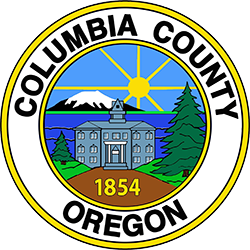Floods and Landslides
Floods and Landslides
Anywhere it rains, it can flood, and landslides can occur in all of the U.S. states and territories.
Just because you have not experienced a flood in the past, does not mean you will not in the future. Flood risk is not only based on history; it is based on a number of factors: rainfall, river-flow and tidal-surge data, topography, flood-control measures and changes due to building and development.
Flood Preparation
Educate yourself. Find out if you live in a flood zone by checking FEMA’s local flood hazard maps or contacting your local Emergency Management agency.
Get insured. The National Flood Insurance Program (NFIP) offers flood insurance to homeowners, renters and business owners if their community participates in the NFIP. Learn more about coverage from the NFIP by visiting Floodsmart.
Safeguard your possessions. Conduct a household inventory and keep copies of all of your critical documents. Knowing what you have and having it documented will make an insurance claim easier to handle should your home be affected by a flood.
Prepare your home and property. Here are some steps you can take to prepare your home and property in case of flood:
- Keep drains, culverts, gutters, streets and driveways clear of leaves and other debris to prevent localized flooding.
- Store flood-fighting supplies like plastic sheeting, lumber and sandbags. Contact your local city or county to find out where you can get sandbags.
- Elevate the furnace, water heater and electrical panel above flooding level.
- If you have a basement, make sure your sump pump is working and has a battery-operated backup.
- If you have time, move furniture, valuables and important documents to a safe place.
Get a kit and make a plan.
- Put together a “Go-kit” for each family member and for your pets. You may need to leave your home suddenly if a flood is imminent and a Go-kit will have all of the items you might need for at least 72 hours.
- Plan and practice a flood evacuation route with your family. Know safe routes from home, work and school that are on higher ground.
- Ask an out-of-state relative or friend to be your emergency family contact.
During a Flood
- Go to higher ground and avoid areas subject to flooding.
- Do not attempt to walk across flowing streams or drive through flooded roadways.
- If water rises in your home before you evacuate, go to the top floor, attic or roof.
- Listen to a battery-operated radio for the latest storm information.
- Turn off all utilities at the main power switch and close the main gas valve if advised to do so.
- If you come in contact with floodwaters, wash your hands with soap and disinfected water.
After a Flood
- If your home has suffered flood damage, call your insurance agent to file a claim.
- Do not re-enter your home until floodwaters have receded, you are cleared to return to your home and you have checked for structural damage.
- Take pictures and an inventory of any damage to your home or possessions.
- Keep power off until an electrician has inspected your system for safety.
- Boil water for drinking and food preparation until you are informed that your water supply is safe.
- Remove wet contents immediately to prevent mold.
- Wear gloves and boots while cleaning or disinfecting.
More information about flooding, flood preparation and response can be found at Ready and Floodsmart.
Landslides and Debris Flows
Landslides occur in all U.S. states and territories. In a landslide, masses of rock, earth, or debris move down a slope. They can be small or large, slow or rapid. Landslides are triggered by storms, earthquakes, volcanic eruptions and the modification of land by humans.
Debris and mud flows are rivers of rock, earth and other debris saturated with water. They occur when water accumulates quickly in the ground, during rainfall and rapid snow melt, and change the earth into a flowing river of mud. They can flow very rapidly and often with little or no warning at high speeds.
Landslide Preparation
Here are steps you can take to protect yourself from the effects of a landslide or debris flow:
- Do not build near or on a steep slope, close to mountain edges, near drainage ways or natural erosion valleys.
- Get a ground assessment of your property.
- Consult a professional expert for advice on how to correct any issues on your property that may cause a landslide.
Recognize Landslide Warning Signs
- Changes in the landscape like storm-water drainage on slopes, land movement, small slides, flows or progressively leaning trees.
- New cracks appear in plaster, tile, brick or foundations.
- Outside walls, walks or stairs begin pulling away from the building.
- Developing and widening cracks appear in the ground or on paved areas.
- Water breaks through the ground in new locations.
- Fences, utility poles or trees tilt or move.
- The ground begins to shift in a downward slope.
During Landslide
The following are guidelines for what you should do if a landslide or debris flow occurs:
- Move away from the path of a landslide or debris flow as quickly as possible.
- Curl into a tight ball and protect your head if escape is not possible.
After a Landslide
The following are guidelines for the period of time following a landslide:
- Stay away from the slide area and do not re-enter your home until cleared to do so by authorities.
- Check for injured or trapped persons near the slide and direct rescuers to their locations.
- Watch for broken electrical, water, gas and sewage lines and damaged roadways and railways.
- Seek advice from a geotechnical expert to reduce any remaining landslide hazards and risk.

